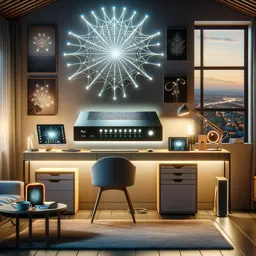Computers are an essential part of our daily lives, and like any other complex machines, they can encounter various issues over time. Knowing how to troubleshoot and fix these problems can save you time and money. Here’s a guide on some common computer issues and how to resolve them.
1. Slow Performance
Causes:
- Too many background programs: Having too many programs running at startup can slow down your computer.
- Fragmented hard drive: Over time, files on your hard drive can become fragmented, slowing down access times.
- Insufficient RAM: Your computer may not have enough memory to handle all the tasks you are performing.
Solutions:
- Reduce startup programs: Go to the Task Manager and disable unnecessary startup programs.
- Defragment your hard drive: Use the built-in disk defragmenter tool in Windows to reorganize fragmented data.
- Upgrade RAM: Consider adding more RAM to your computer to improve performance.
2. Overheating
Causes:
- Dust buildup: Dust can accumulate inside the computer, blocking airflow and causing overheating.
- Faulty cooling system: Fans and heat sinks can fail over time, reducing their effectiveness.
Solutions:
- Clean your computer: Regularly clean the inside of your computer to remove dust. Use compressed air to blow out dust from fans and vents.
- Check the cooling system: Ensure all fans are working correctly. Replace any faulty fans or heat sinks.
3. Unexpected Shutdowns
Causes:
- Hardware issues: Faulty power supply or overheating can cause unexpected shutdowns.
- Software conflicts: Conflicts between software programs or corrupted system files can also lead to shutdowns.
Solutions:
- Check the power supply: Ensure your power supply is functioning correctly and providing stable power.
- Update drivers and software: Make sure all your drivers and software are up to date to avoid conflicts.
- Scan for malware: Run a full system scan to check for malware that might be causing the issue.
4. Internet Connectivity Problems
Causes:
- Router/modem issues: Problems with your router or modem can disrupt your internet connection.
- Network settings: Incorrect network settings on your computer can prevent you from connecting to the internet.
Solutions:
- Restart your router/modem: Turn off your router and modem, wait a few minutes, and then turn them back on.
- Check network settings: Ensure your computer’s network settings are correctly configured. You can use the network troubleshooter tool in Windows to identify and fix issues.
- Update network drivers: Make sure your network drivers are up to date.
5. Blue Screen of Death (BSOD)
Causes:
- Hardware failure: Faulty hardware components can cause BSOD errors.
- Driver issues: Outdated or corrupt drivers are common causes of BSOD.
- Software conflicts: Certain software programs can cause system instability, leading to BSOD.
Solutions:
- Check hardware: Run hardware diagnostics to identify any faulty components.
- Update drivers: Ensure all your drivers are up to date, particularly those for critical components like graphics cards and motherboards.
- Reinstall operating system: If the problem persists, consider reinstalling your operating system to resolve any software conflicts.
Conclusion
Understanding how to troubleshoot and fix common computer issues can empower you to maintain your computer’s performance and longevity. Regular maintenance and staying updated with the latest software and drivers are key to preventing many of these problems. By following these tips, you can keep your computer running smoothly and avoid unnecessary downtime.
















